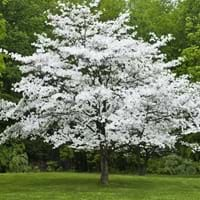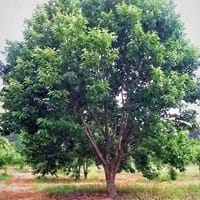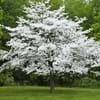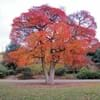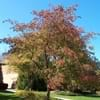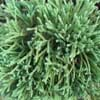Life Span
Perennial
Perennial
Origin
China, Japan, Korea
North America, Northeastern United States, Mid-Atlantic United States, Southeastern United States, Canada
Types
Chinese kousa dogwood, Blue Shadow kousa, Weaver's Weeping dogwood
Not Available
Number of Varieties
Not Available
Habitat
gardens, Near ponds, Wet Woods
Deciduous forests, Forest margins
USDA Hardiness Zone
5-8
5-8
Sunset Zone
2a, 2b, 3a, 3b, 4, 5, 6, 7, 8, 9, 14, 15, 16, 17
2a, 2b, 3a, 3b, 4, 5, 6, 7, 8, 9, 14, 15, 16, 17
Habit
Spreading
Oval or Rounded
Flower Color
White, Green
Gold, Light Green, Light Yellow, White
Flower Color Modifier
Bicolor
Bicolor
Fruit Color
Red
Light Green, Sienna, Chocolate
Leaf Color in Spring
Light Green
Green
Leaf Color in Summer
Green
Green
Leaf Color in Fall
Red, Purple, Burgundy
Yellow, Yellow green, Gold
Leaf Color in Winter
Not Available
Not Available
Plant Season
Spring, Summer, Fall, Winter
Spring, Summer, Fall
Sunlight
Full Sun, Partial Sun, Partial shade
Full Sun, Partial Sun
Type of Soil
Loamy, Moist
Clay, Loam
The pH of Soil
Acidic, Neutral
Acidic, Neutral
Soil Drainage
Well drained
Well drained
Bloom Time
Late Spring, Early Summer
Early Summer
Tolerances
Humidity, Light Frost
Not Available
Where to Plant?
Ground
Ground
How to Plant?
Seedlings, Stem Cutting
Seedlings, Stem Planting
Plant Maintenance
Medium
Medium
Watering Requirements
Allow to dry out slightly between watering, occasional watering once established
Needs very little water
In Summer
Lots of watering
Lots of watering
In Spring
Moderate
Moderate
In Winter
Average Water
Average Water
Soil pH
Acidic, Neutral
Acidic, Neutral
Soil Type
Loam, Moist, Well drained
Clay, Loam
Soil Drainage Capacity
Loamy, Well drained
Well drained
Sun Exposure
Full Sun, Partial Sun, Partial shade
Full Sun, Partial Sun
Pruning
Prune if you want to improve plant shape, Prune lower leaves, Prune once the plant is tall enough
Cut back all stems to the same height, Pinch or prune as they grow to promote branching and bushiness, Remove damaged leaves, Remove dead branches, Remove dead leaves
Fertilizers
Fertilize in early spring, Mulch
14-14-14 Fertilizer, Compost, General purpose liquid or granular fertilizer
Pests and Diseases
Crown rot, Leaf spot, Red blotch, Whiteflies
Chestnut Blight
Plant Tolerance
Humidity, Light Frost
Drought
Flowers
Showy
Insignificant
Flower Petal Number
Single
Not Available
Foliage Texture
Medium
Medium
Foliage Sheen
Glossy
Matte
Attracts
Birds, Butterflies, Hummingbirds, Squirrels
Bees, Birds, Deers
Allergy
allergic conjunctivitis, Headache, Pollen
conjunctivitis, Vomiting
Aesthetic Uses
Beautification, Cottage Garden, Showy Purposes
Showy Purposes
Beauty Benefits
For treating wrinkles, Makes teeth white, Making cosmetics, Skin cleanser
Not Available
Environmental Uses
Forms dense stands, Nesting sites for birds, Shadow Tree, soil stabilisation
Air purification, Wildlife
Medicinal Uses
Acne, Antibiotic, Appetite enhancer, Cough, Diuretic, Emollient, Nutrients, Weight loss
Arthritis, Cough, Sore throat, Swelling
Part of Plant Used
Bark, Flowers, Fruits, Leaves
Sap, Wood
Other Uses
Application in Handicrafts, Decoration Purposes, Grown for shade, Used as Ornamental plant
Decorative veneers, flooring, paneling, Used in Furniture, Used in pulpwood and lumber production
Used As Indoor Plant
No
No
Used As Outdoor Plant
Yes
Yes
Garden Design
Feature Plant, Shade Trees
Edible, Feature Plant, Shade Trees
Botanical Name
CORNUS kousa 'China Girl'
CASTANEA dentata
Common Name
China Girl Dogwood, Kousa Dogwood
American Chestnut
In Hindi
Cornus kousa
अमेरिकी शाहबलूत
In German
Blüten-Hartriegel
Amerikanische Kastanie
In French
Cornouiller à fleurs
Châtaignier d'Amérique
In Spanish
Cornus kousa
Castanea dentata
In Greek
Cornus kousa
american καστανιάς
In Portuguese
Cornus kousa
castanea americana
In Polish
Cornus kousa
Kasztan amerykański
In Latin
Cornus kousa
English castaneis
Phylum
Magnoliophyta
Magnoliophyta
Class
Magnoliopsida
Magnoliopsida
Family
Cornaceae
Fagaceae
Clade
Angiosperms, Asterids, Eudicots
Angiosperms, Eudicots, Rosids
Tribe
Not Available
Not Available
Subfamily
Not Available
Not Available
Number of Species
Not Available
Not Available
Importance of Kousa Dogwood and American Chestnut
Want to have the most appropriate plant for your garden? You might want to know the importance of Kousa Dogwood and American Chestnut. Basically, these two plants vary in many aspects. Compare Kousa Dogwood and American Chestnut as they differ in many characteristics such as their life, care, benefits, facts, etc. Every gardener must at least have the slightest clue about the plants he wants to plant in his garden. Compare their benefits, which differ in many ways like facts and uses. The medicinal use of Kousa Dogwood is Acne, Antibiotic, Appetite enhancer, Cough, Diuretic, Emollient, Nutrients and Weight loss whereas of American Chestnut is Arthritis, Cough, Sore throat and Swelling. Kousa Dogwood has beauty benefits as follows: For treating wrinkles, Makes teeth white, Making cosmetics and Skin cleanser while American Chestnut has beauty benefits as follows: For treating wrinkles, Makes teeth white, Making cosmetics and Skin cleanser.
Compare Facts of Kousa Dogwood vs American Chestnut
How to choose the best garden plant for your garden depending upon its facts? Here garden plant comparison will help you to solve this query. Compare the facts of Kousa Dogwood vs American Chestnut and know which one to choose. As garden plants have benefits and other uses, allergy is also a major drawback of plants for some people. Allergic reactions of Kousa Dogwood are allergic conjunctivitis, Headache and Pollen whereas of American Chestnut have conjunctivitis and Vomiting respectively. Having a fruit bearing plant in your garden can be a plus point of your garden. Kousa Dogwood has showy fruits and American Chestnut has showy fruits. Also Kousa Dogwood is not flowering and American Chestnut is not flowering . You can compare Kousa Dogwood and American Chestnut facts and facts of other plants too.
